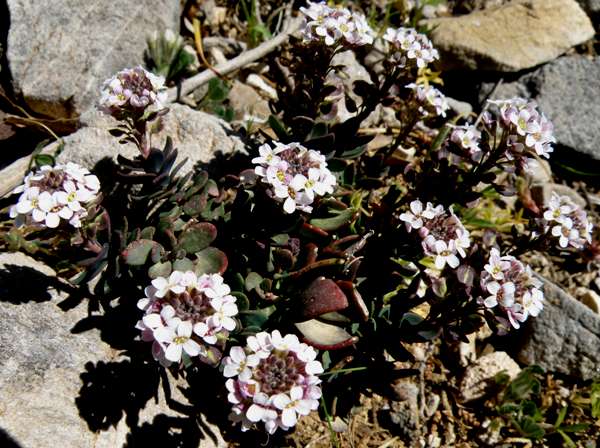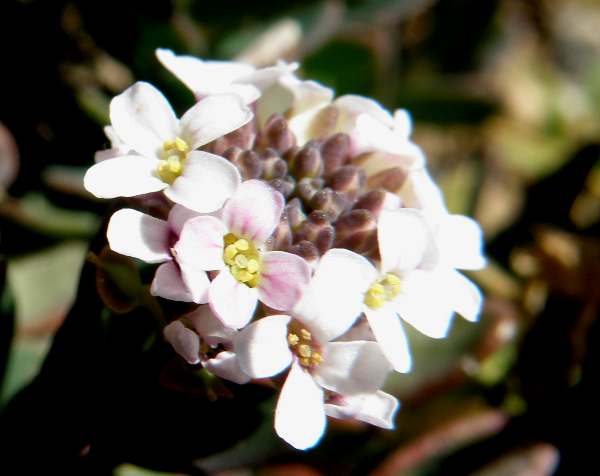Aethionema saxatile - Burnt Candytuft
Phylum: Magnoliophyta - Class: Equisetopsida - Order: Apiales - Family: Brassicaceae

For people living in Britain and Ireland, Candytuft in the form of a cultivar is associated with neat, edged flowerbeds in gardens and parks in the height of summer.
Description
The flowers of Burnt Candytuft, a dwarf rock plant, are 3 to 6 mm across and have four notched petals; they are variable in colour and can be white, pink or mauve. Stems range from 3 to 35 cm tall and have a rather woody base.

Distribution
Burnt Candytuft is found in the western and central Mediterranean from Spain eastwards to Greece and also in Sardinia, Sicily and Crete.
Habitat
This member of the brassicaceae (Cabbage family, formerly known as cruciferae) grows in rocky habitats in the hills and mountains.
Blooming Times
Burnt Candytuft blooms in springtime.
Etymology
Aethionema comes from aitho- meaning to scorch, and -nema meaning a filament or thread - hence the genus name refers to a scorched filament or thread. The specific epithet saxatile means 'found growing among rocks'.
The plants shown on this page were photographed in Crete in early April.
Please Help Us: If you have found this information interesting and useful, please consider helping to keep First Nature online by making a small donation towards the web hosting and internet costs.
Any donations over and above the essential running costs will help support the conservation work of Plantlife, the Rivers Trust and charitable botanic gardens - as do author royalties and publisher proceeds from books by Pat and Sue.

